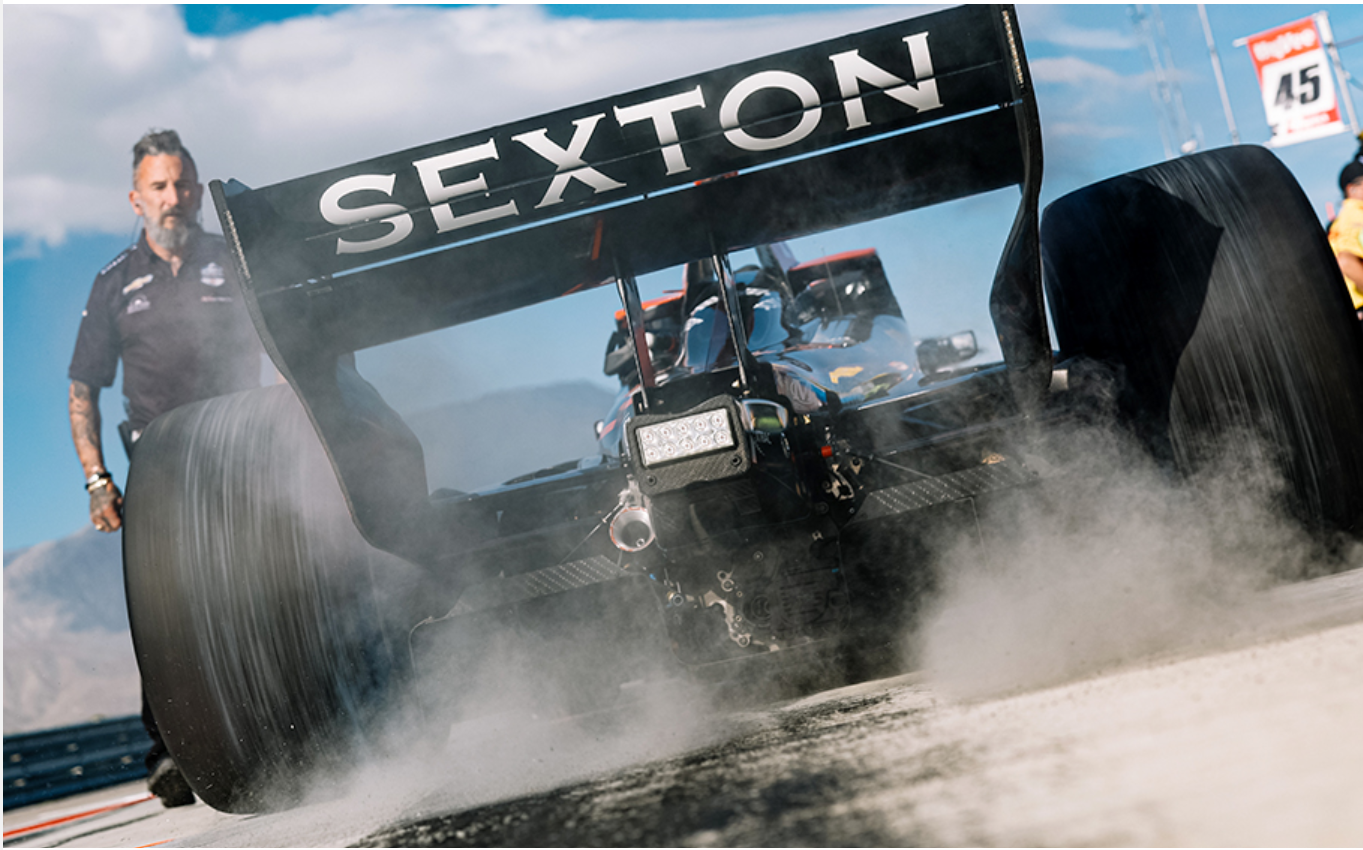
Photo by Indy Car
By Eric Smith- Indy Car
Orbiting astronauts are classified as free-falling objects. The only force on their bodies is the force of gravity. When astronauts launch into space, Earth departure can force the individuals to experience forces around three times the Earth’s gravity.
Their bodies are pushed to the limit.
So are the bodies of NTT INDYCAR SERIES drivers. During an NTT INDYCAR SERIES race, drivers while cornering experience up to 5 g’s on their bodies and up to 1.5 g’s accelerating.
“I think both are underrated, that’s for sure,” Ed Carpenter Racing driver Rinus VeeKay. “Racing as a sport and an astronaut being an athlete. I think both also at the rate at which how much the G forces affect you.”
VeeKay said the seating position of astronauts and race cars drivers forces them to incur more upper body g-loading. An example VeeKay gives is when he drives his No. 21 Ed Carpenter Racing Chevrolet, he is pushed back in the seat at various times of a race, similar in nature how an astronaut is pressed into their seat when blasting off.
Dale Coyne Racing’s Jack Harvey said g-forces are an exciting differentiator between driving a race car and a street vehicle. The general public feels forces in street cars that may lead them to believe they’re approaching racing vehicle stresses, but Harvey said the loads are not close.
That’s a common misconception, one that will be discussed at a public education seminar available for attendees of the Total Solar Eclipse Event at the Indianapolis Motor Speedway presented by Purdue University on Monday, April 8.
bring to the forefront.
A daily driver is nothing like sitting behind the wheel of a race car powered by a 2.2-liter, V-6, twin-turbocharged Honda or Chevrolet engine. These racing machines have an estimated 650-700 horsepower – and no power steering.
During a typical INDYCAR SERIES race, a drivers’ heart rate reaches 85-95 percent of capacity, translating to 150-200 beats per minute. Their body temperatures can rise to over 100 degrees Fahrenheit while wearing layers of protective clothing.
That’s similar in nature to an astronaut who wears protective layering and has a high heart rate as they approach liftoff.
“I think probably the most exciting part of the race always is the start,” Harvey said. “Everyone’s lined. Then suddenly it goes. You get kind of pushed back in your seat, and you’re neck goes back. Your adrenaline’s pumping, you’re going fast. Suddenly, you get to Turn 1 and you hit the brakes, and that obviously drives your body forward.”
Those rigors are why astronauts and race car drivers have strict training regimens. VeeKay said there’s no way to truly simulate the feeling of being strapped into the car at speed, so he just tries to work out and be as well-rounded as possible in his fitness.
Drew Feustel is a world-renowned astronaut who has been part of Purdue University’s Cradle of Astronauts, producing 27 astronauts who have graduated from its campus. He took three space flights with NASA before retiring last year and remains a passionate motorsports fan who is excited his two worlds are colliding April 8, as he will be on hand at the Total Solar Eclipse activities at IMS.
Racing and space have many connections, Feustel said.
“Astronauts are astronauts with the team behind them,” Feustel said. “All that hard work, all the organizations are behind them. Very similar to a racing organization. In the end, those teams are just trying to put a driver in the car and get them to the finish line, first. For us, we’re putting astronauts in space with a team behind them with a goal of mission success.
“You can say we live on the edge of risk and safety margins, always trying to push the boundaries to do things further and faster. Race car drivers are the same.”
IMS is putting on a full day’s worth of events surrounding the eclipse for people to enjoy at the track. This day will be far more than just three minutes and 46 seconds of darkness during totality.
Purdue and IMS will collaborate on special exhibits inside the track to educate fans about space and racing – and their unique tie-ins. Consider it a fast-paced science fair.
From a STEM symposium with presentations, displays and exhibits, to a booth featuring Purdue, NASA, Indiana Space Grant Consortium and NearSpace Education experts to a data balloon launch, as well as Kiss The Bricks Tours, autograph sessions with NTT INDYCAR SERIES drivers and astronauts and an NTT INDYCAR SERIES car taking demonstration laps, IMS and Purdue are using this phenomenon to produce a days’ worth of excitement.
Tickets and more information for The Total Solar Eclipse Event at IMS presented by Purdue University are available here.



I’m really impressed with your writing skills and also with the layout on your blog. Is this a paid theme or did you customize it yourself? Either way keep up the nice quality writing, it抯 rare to see a nice blog like this one today..
Thank you. This is a sports website. This is a paid template but I have customized the site for sports fans access.
I抳e been exploring for a little for any high quality articles or blog posts on this kind of area . Exploring in Yahoo I at last stumbled upon this web site. Reading this information So i am happy to convey that I have an incredibly good uncanny feeling I discovered exactly what I needed. I most certainly will make certain to do not forget this web site and give it a look on a constant basis.
Thank you. Please tell a friend or two. :